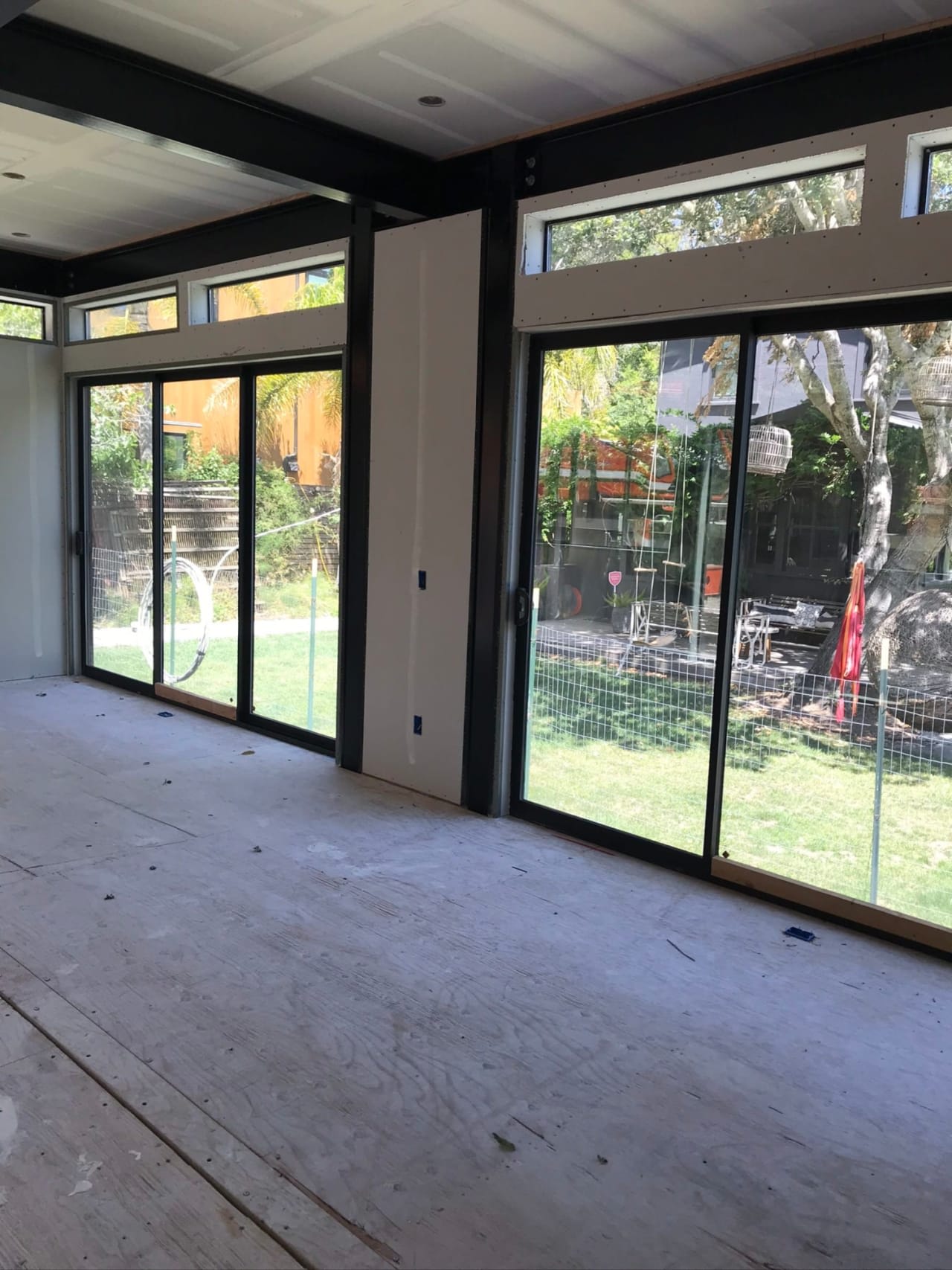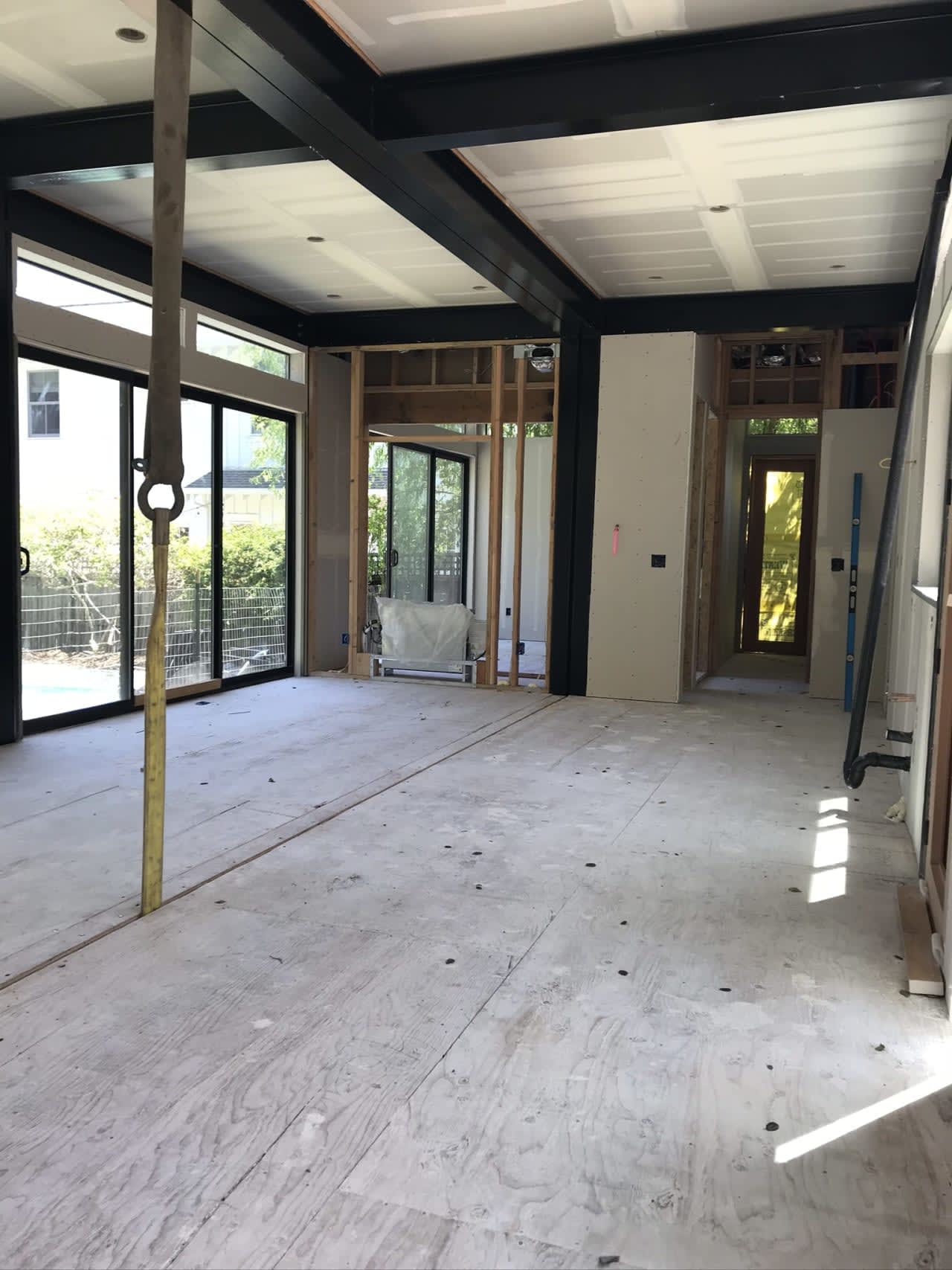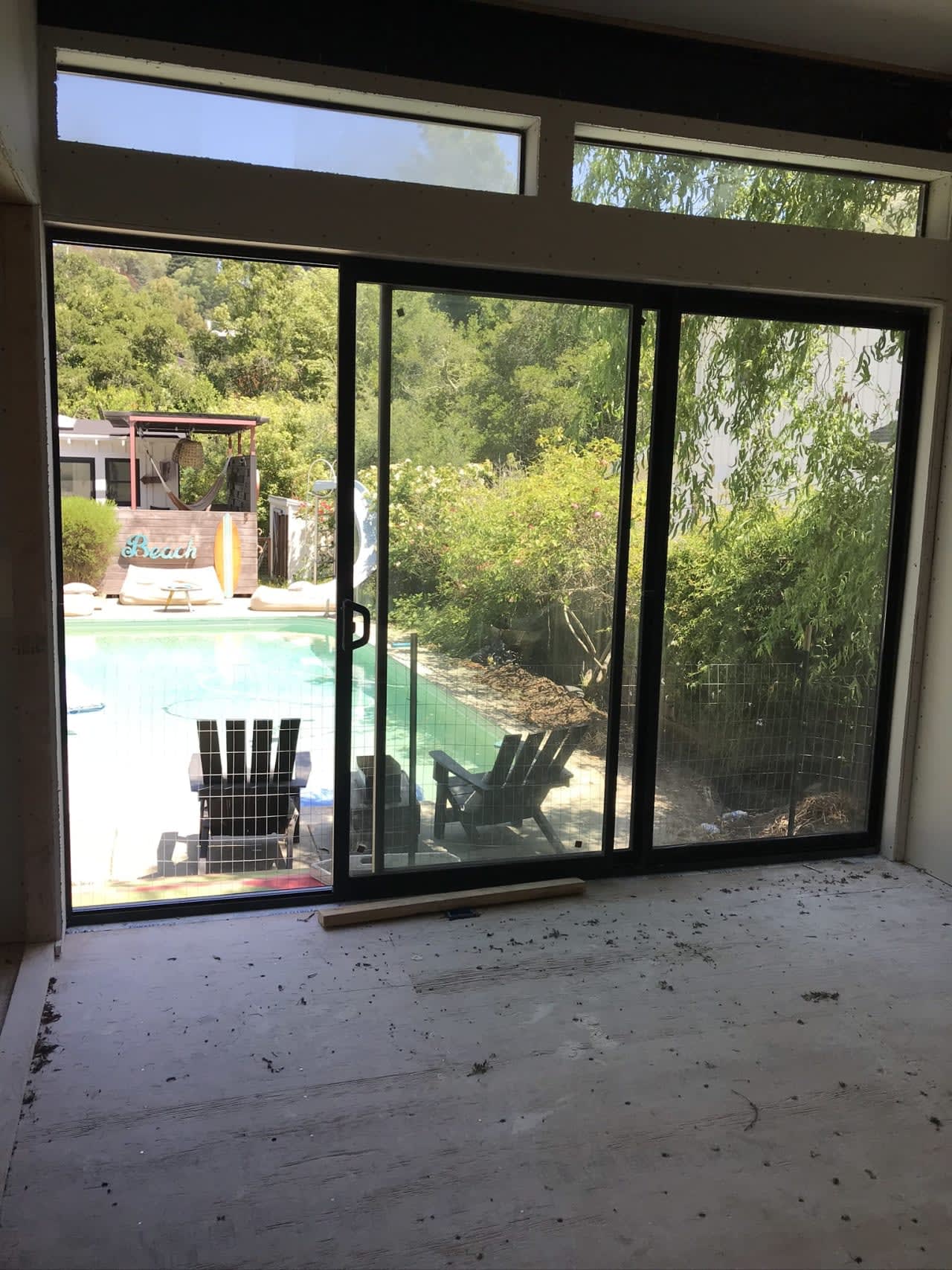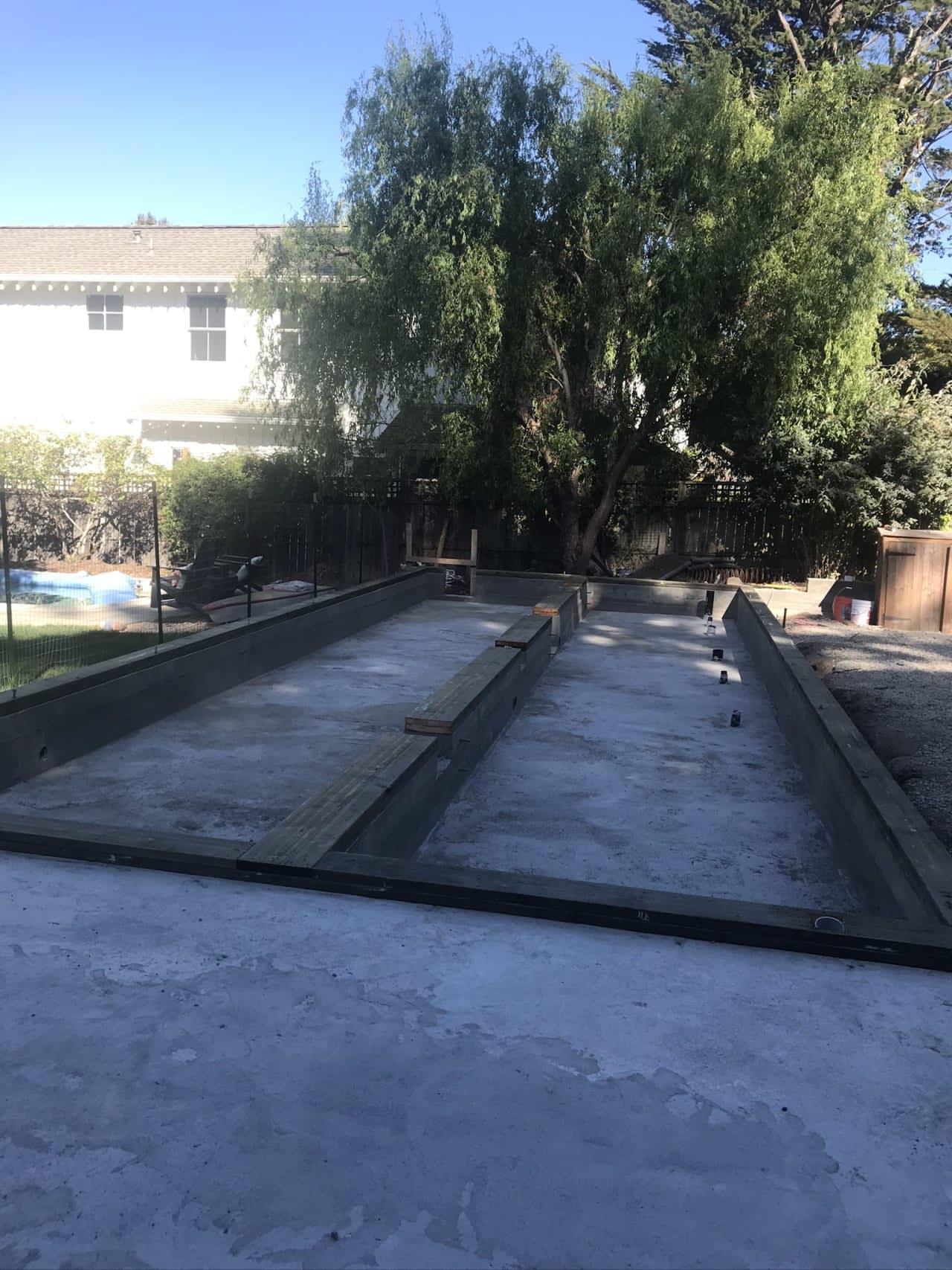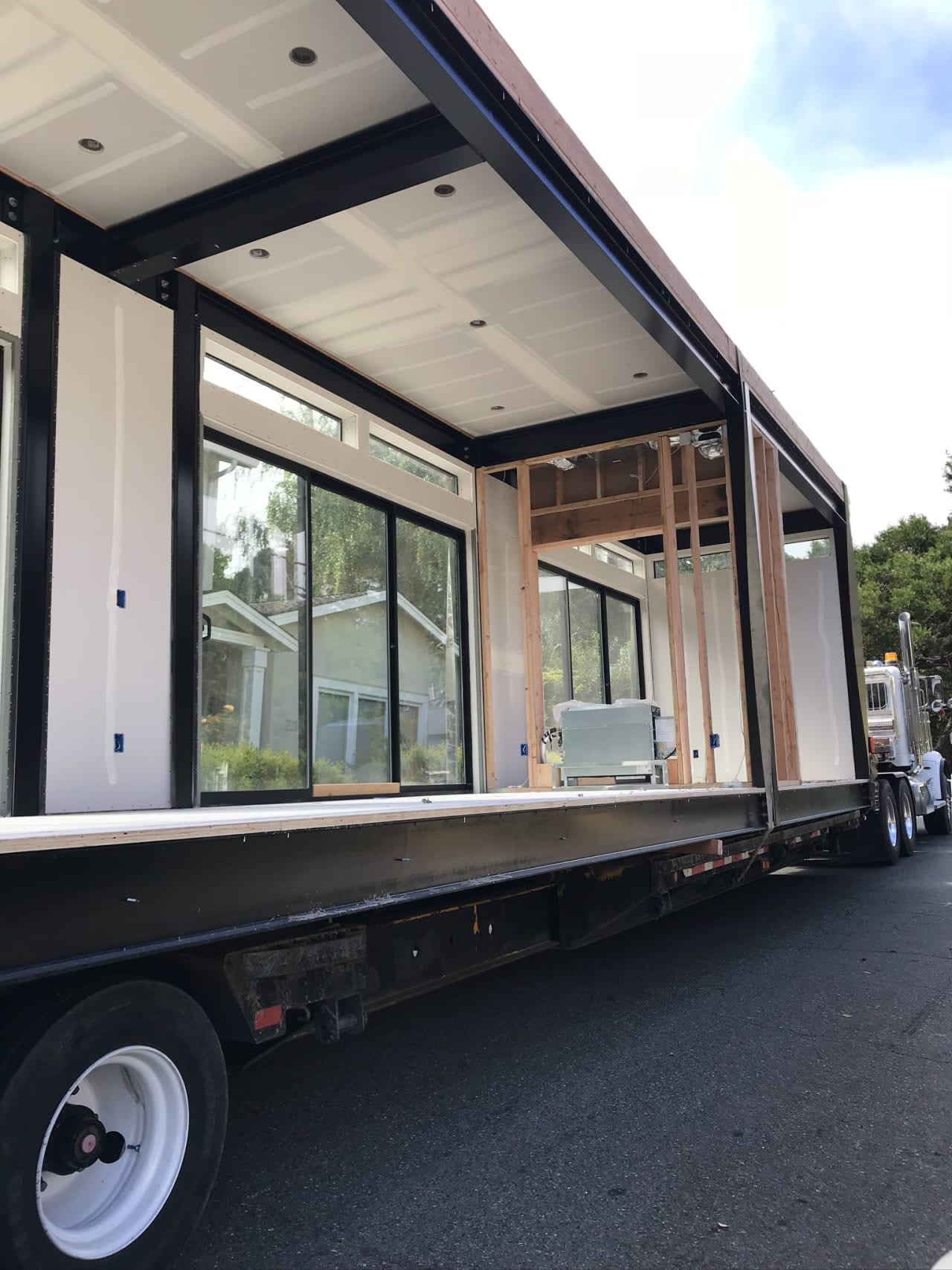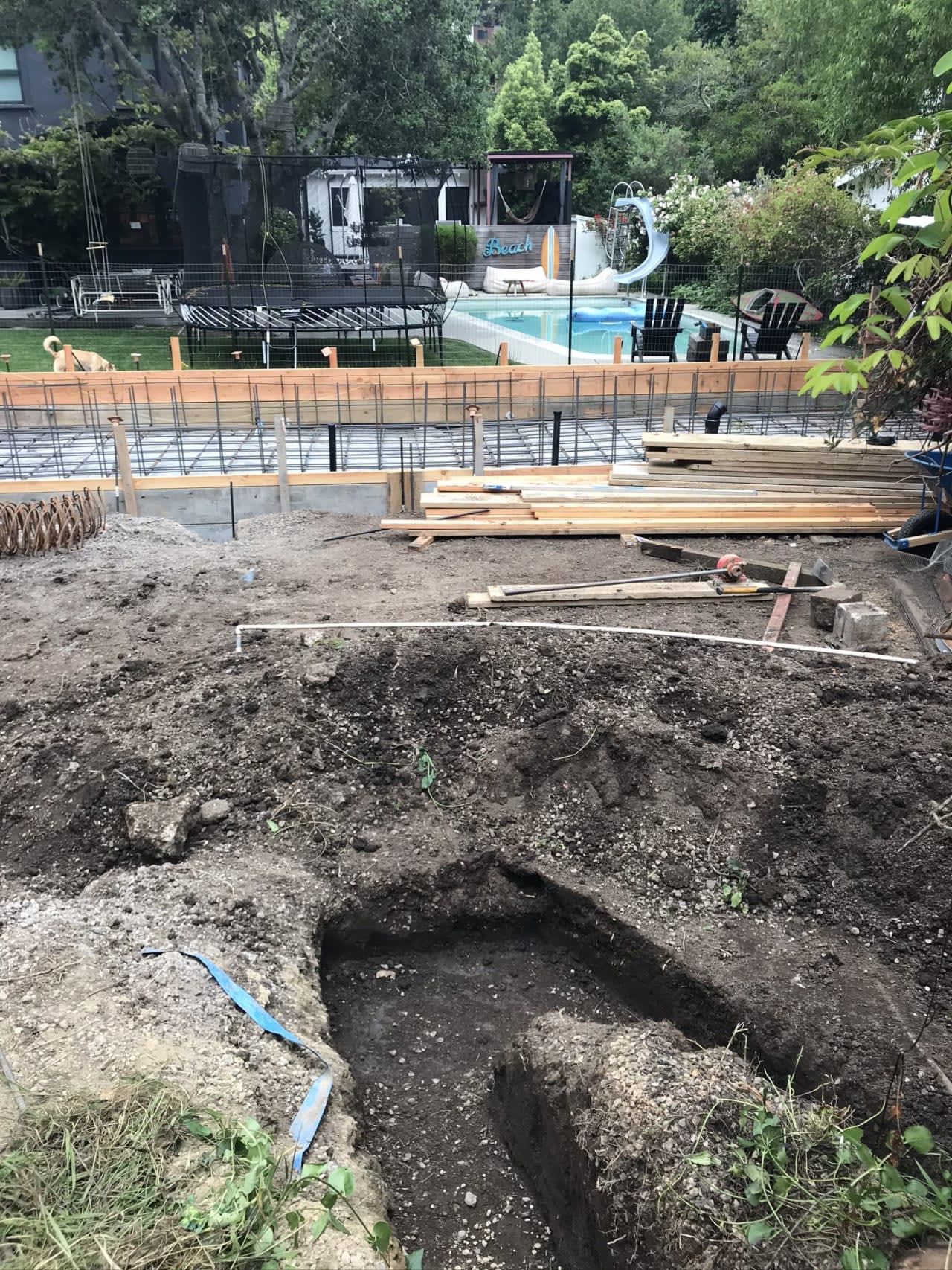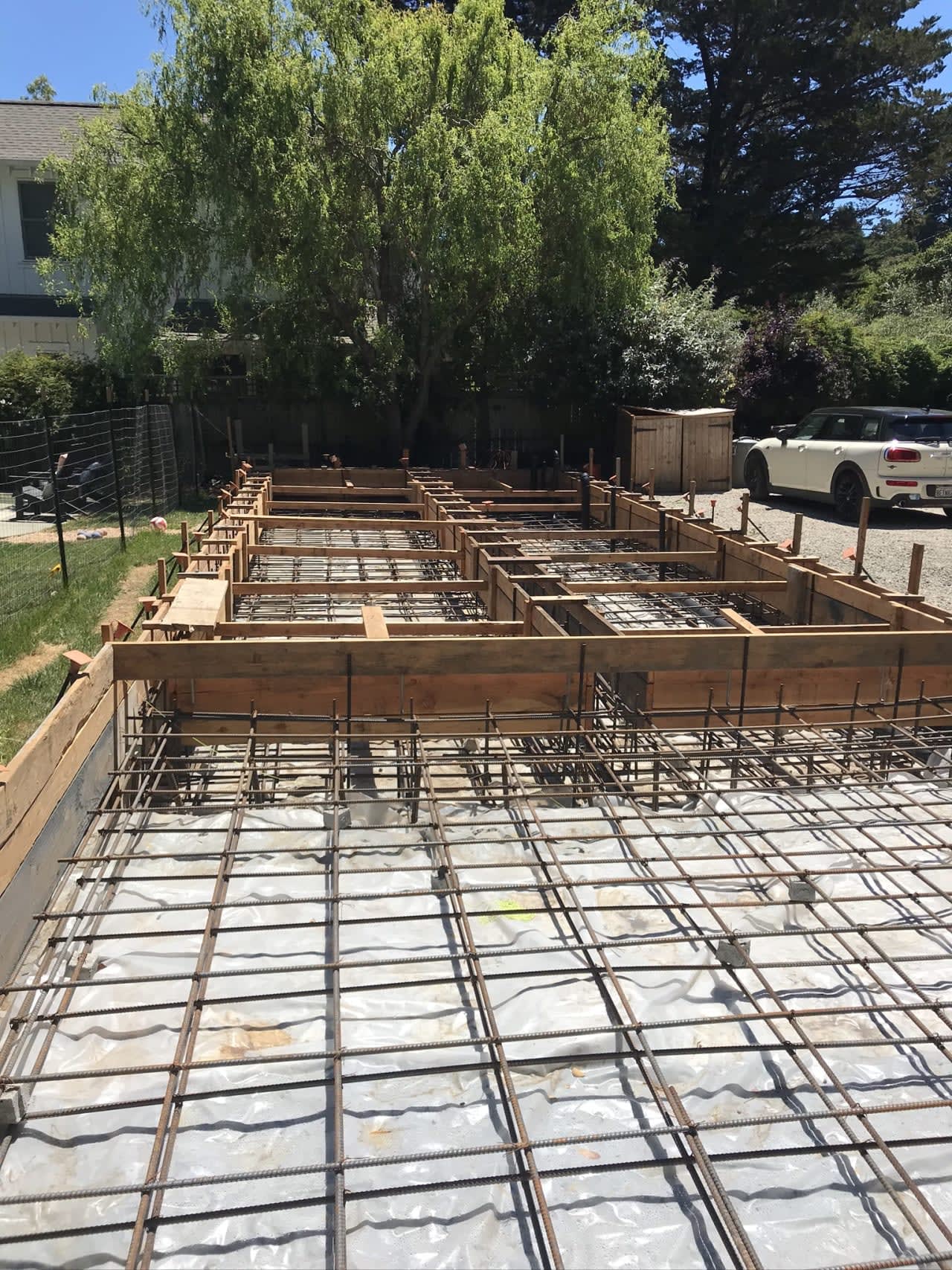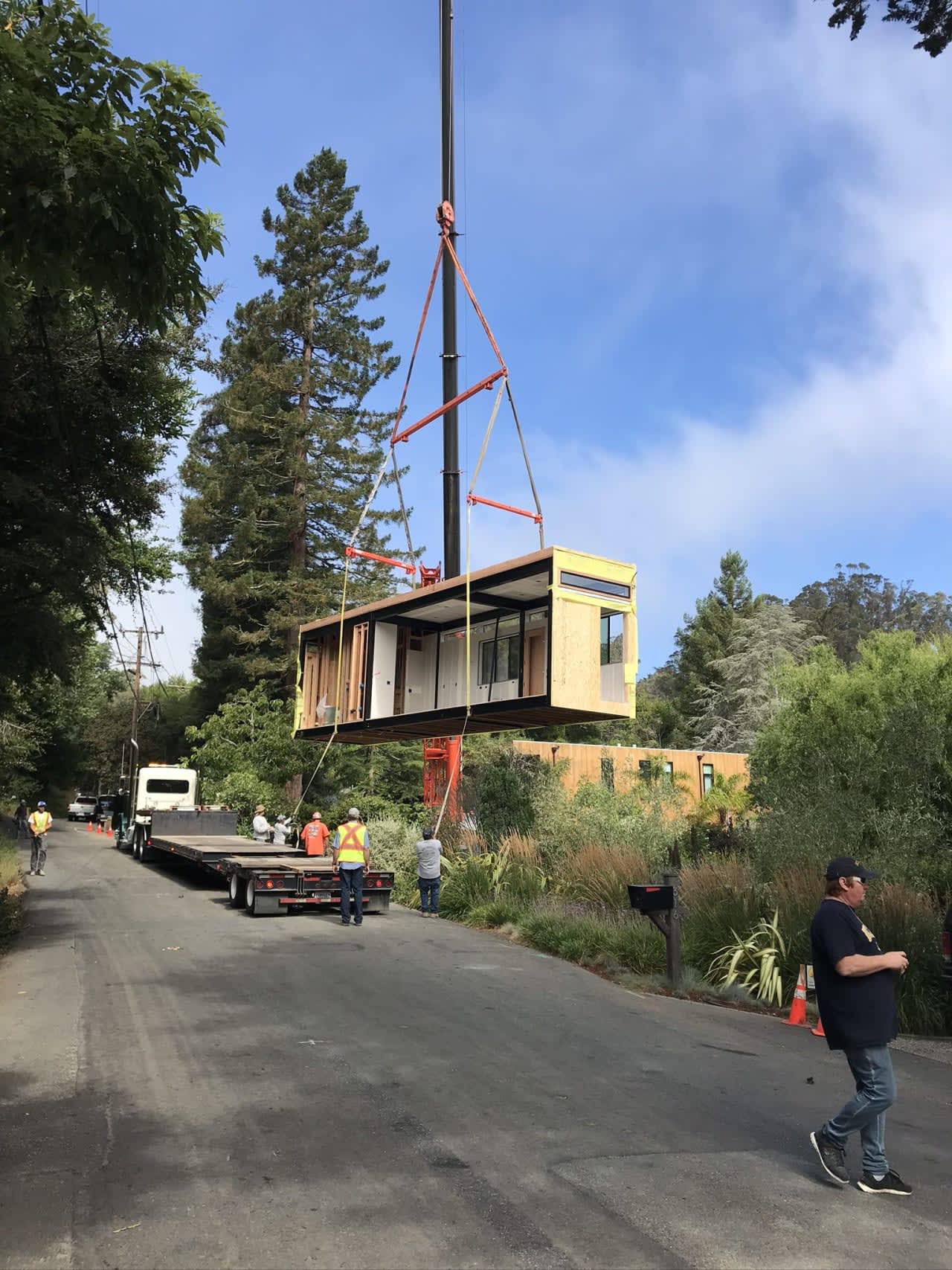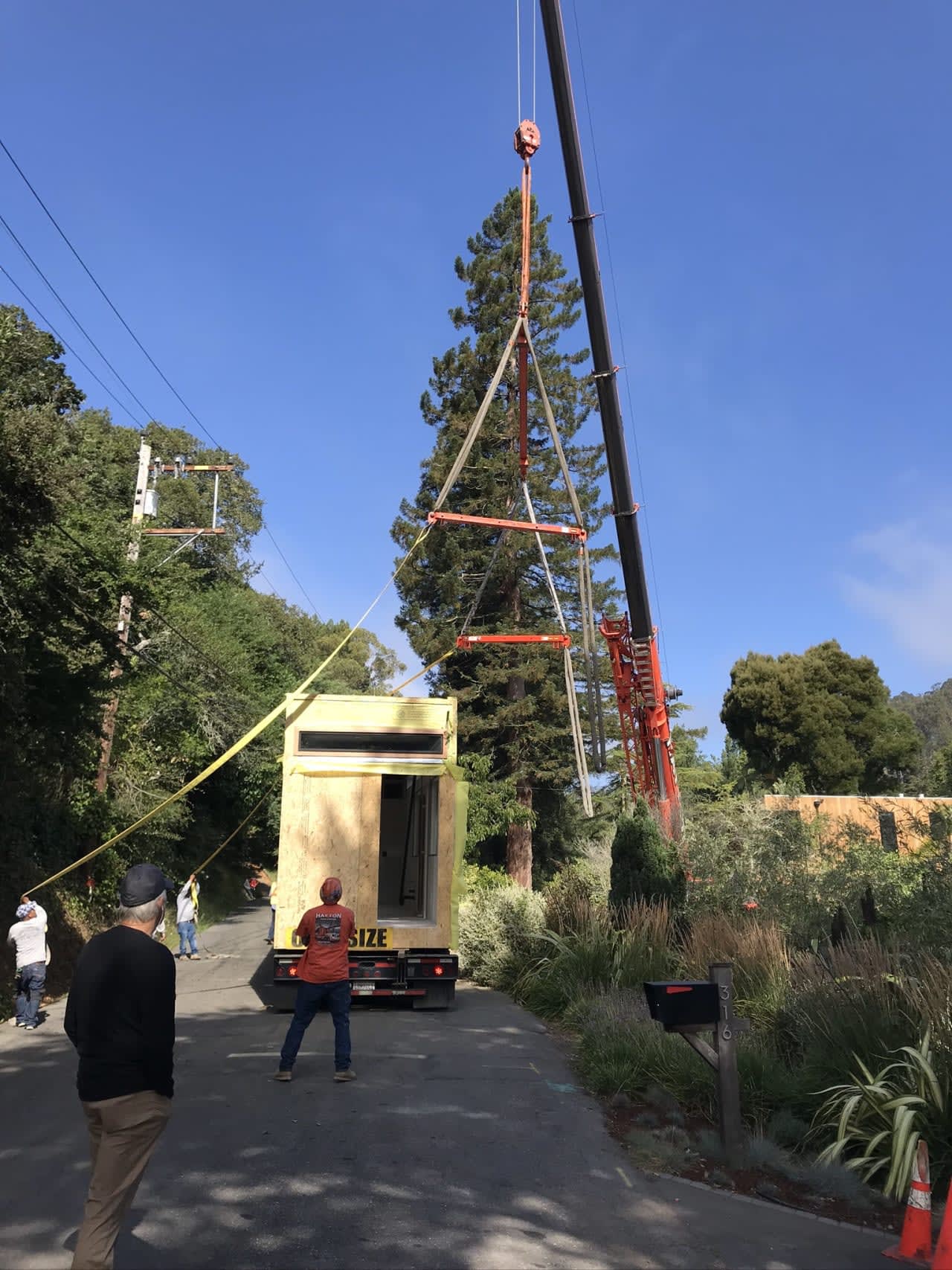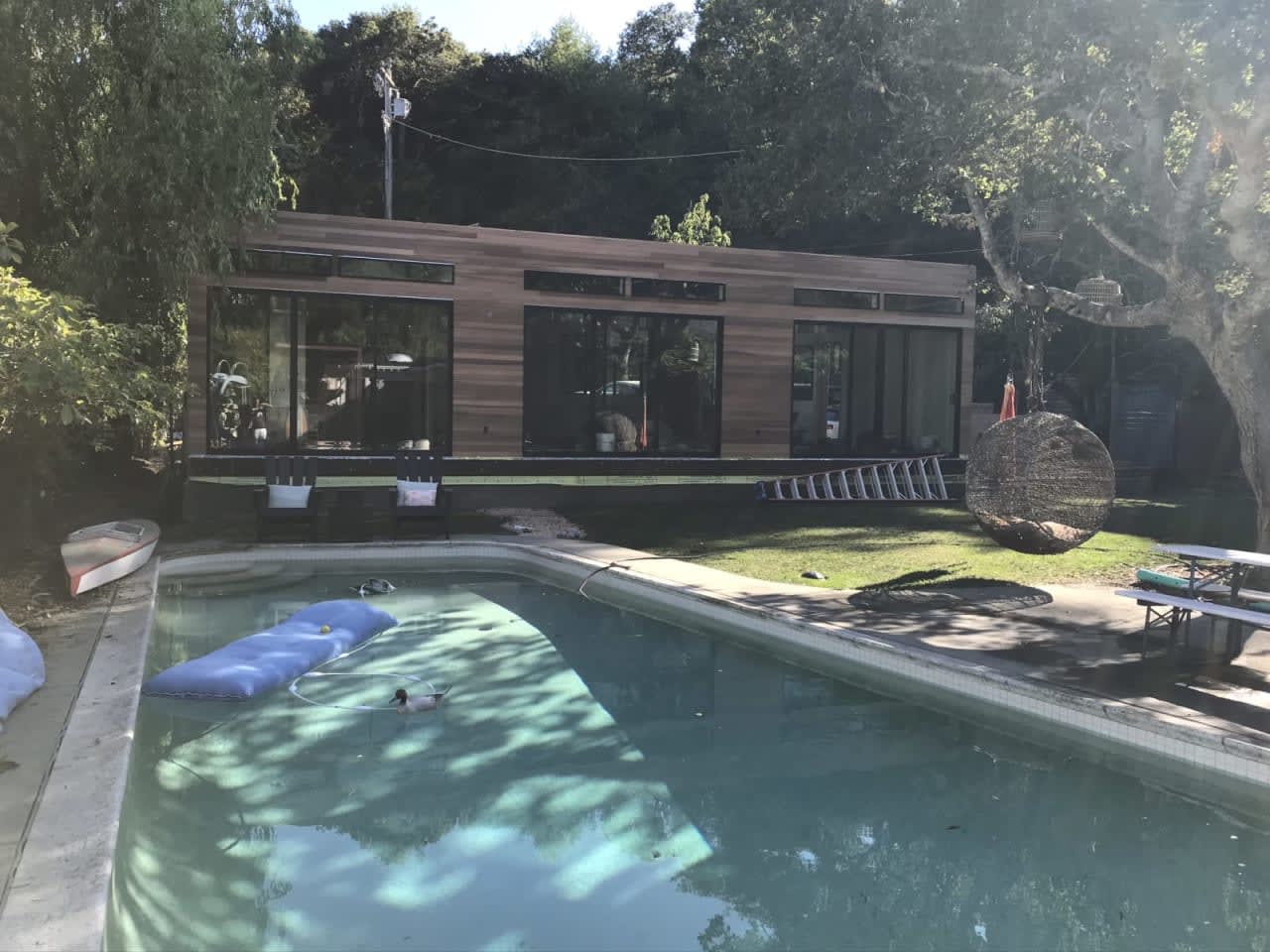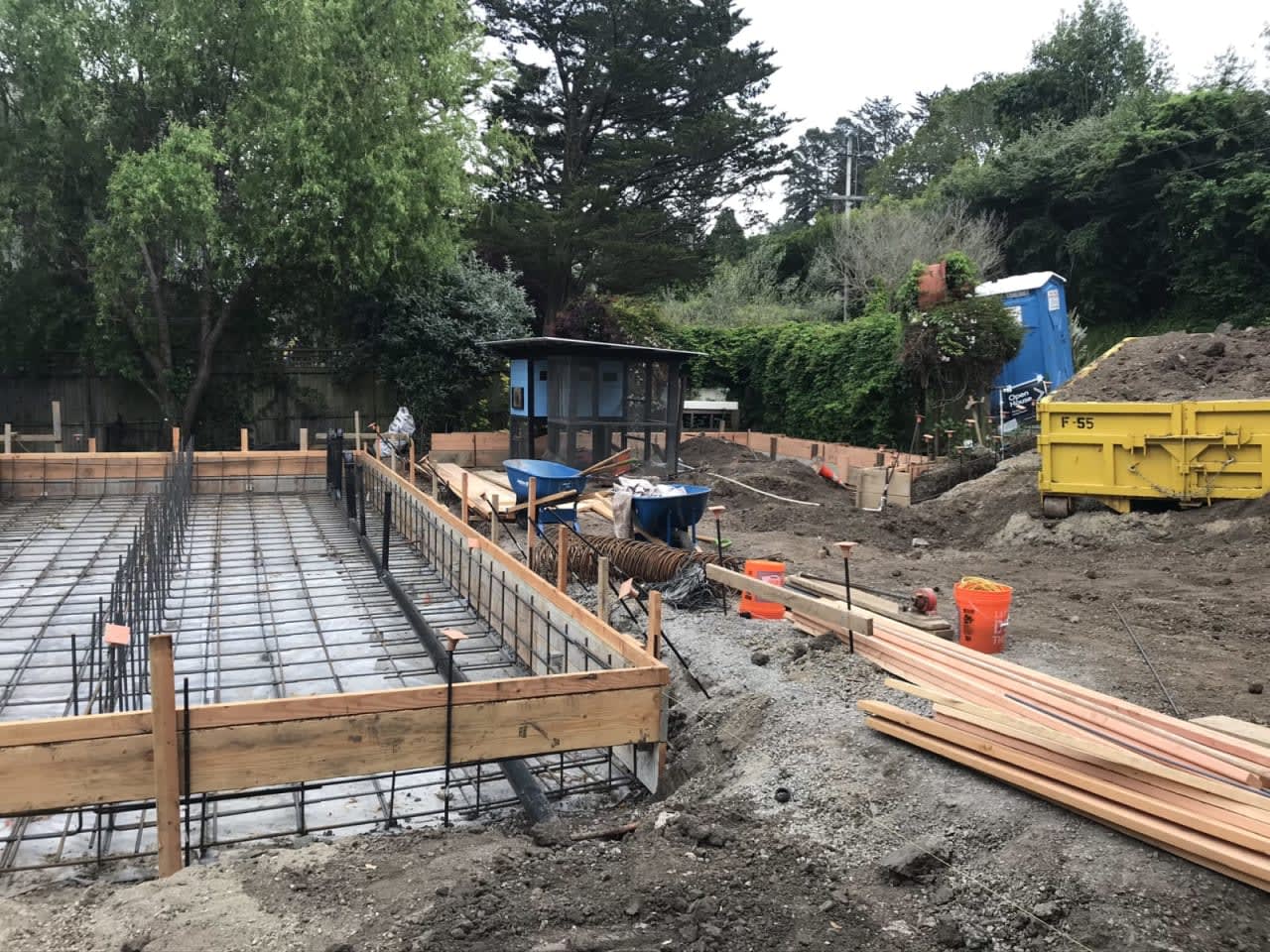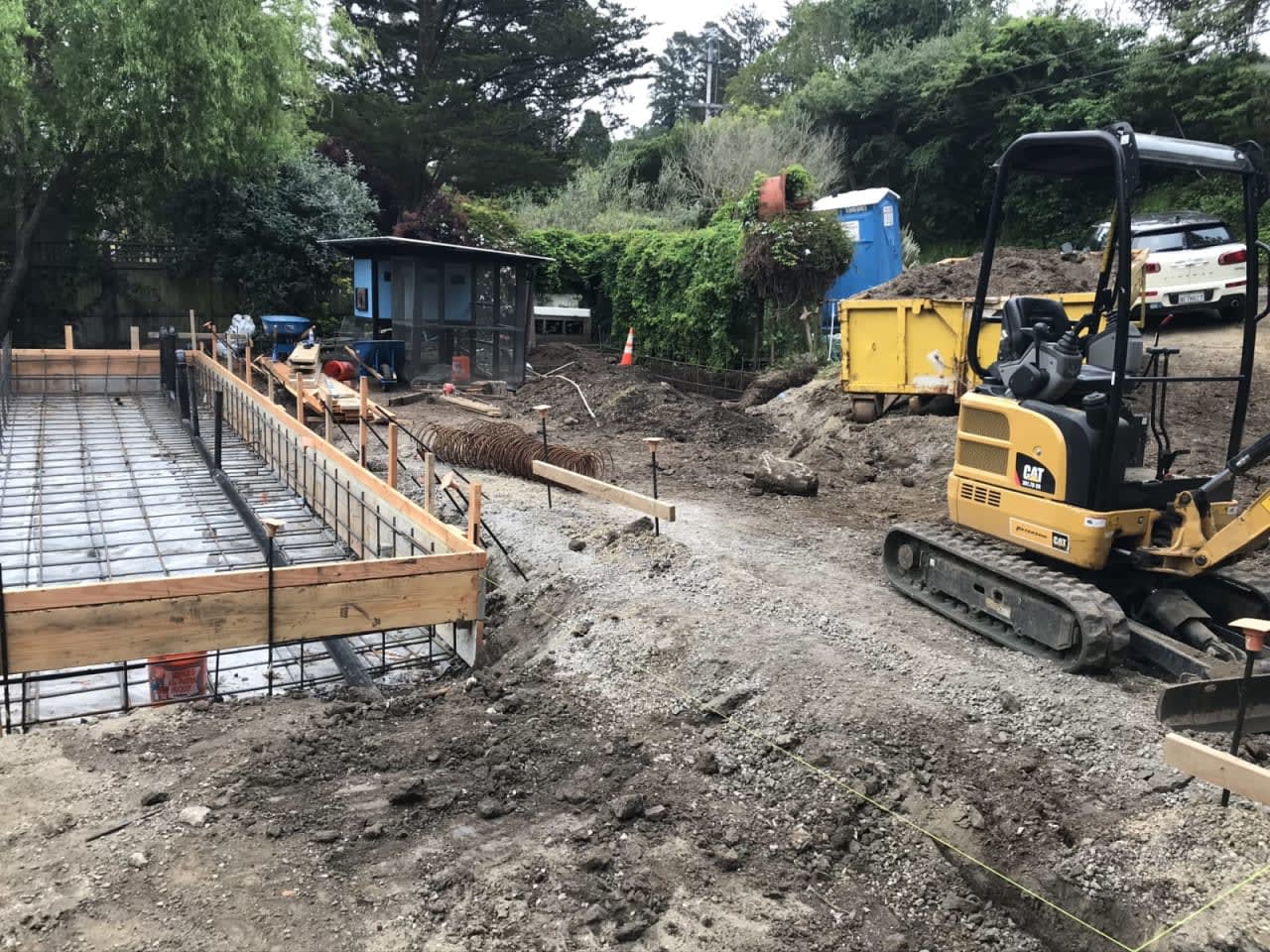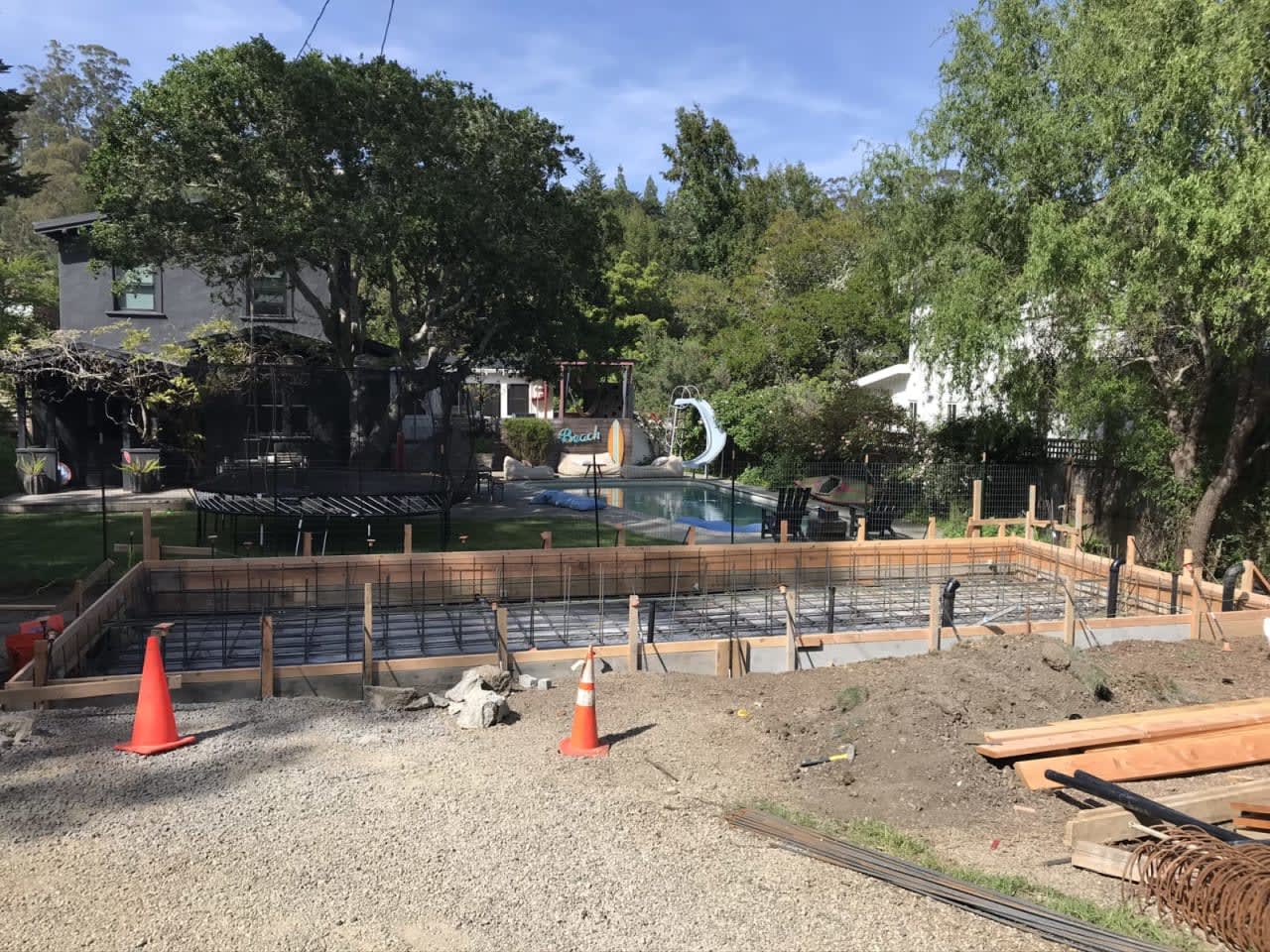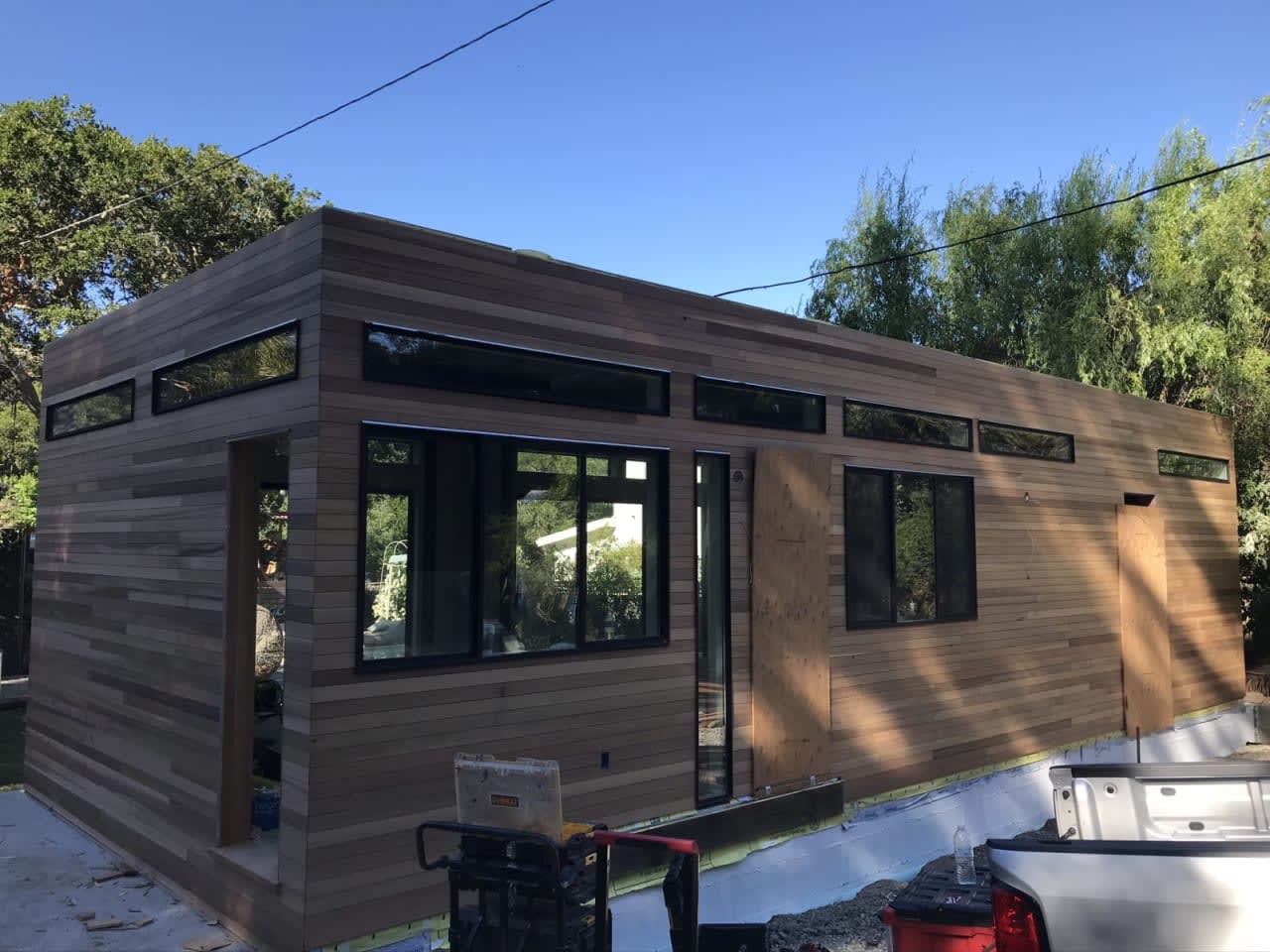I have always been fascinated with the concept of Prefab architecture and construction as a means of building a home more quickly and more affordably. For years I have been collecting info on all of the companies and architects from around the world that have gotten into the prefab space. With every renovation project we have done, I have always wanted to add an element of prefab to the project but for whatever reason the opportunity never presented itself until recently. We decided to put in a pool house at our residence in Homestead Valley in Mill Valley CA and finally the opportunity for a prefab presented itself.
While the images of the sexy, boxy modern prefabs in the magazines look great I had heard a few horror stories about the actual process. A few years ago we helped some clients buy raw land in Sonoma. They used one of the larger, national prefab manufacturers to build their home. It turned out to be a disaster. There were constant cost overruns, mismanagement, false promises and delays and they were extremely dissatisfied. This gave me some pause about the prospect. Maybe this prefab phenomenon was simply too good to be true. Obviously the whole point of prefab is to make the logistics easier, not harder and quicker than traditional stick built construction. When another client had a similar experience with a big box prefab company I knew I would have to find an alternative option if we were going to really give this a shot.
Our home in Mill Valley is a 3 bedroom 3 bathroom so we have no place for guests to stay. My wife and I both originally from the East Coast so we have our parents often visiting for extending periods to see the grandkids. The main house has a large open floor plan so there isn’t really a secondary space for the kids to hang out on their own. Now that they are teenagers this is becoming more and more important when they have friends coming over. They need a place for to chill without their parents looking over their shoulder. When we learned that Marin county was making it easy for people to put ADU’s on their property we thought a separate structure versus an addition to the main house would be a great option.
Prefab Manufacturer Selection
After scouring the internet I came across a local company that was doing prefab and installing modules in Northern California, Digz2go. Architect, Paul Nysulassie, had a local factory near Stockton, California where he was designing and building modular homes. We met at my property and he evaluated the lot and its accessibility to transport the modules by flatbed truck and crane them onto my site. Once we determined that this was in fact feasible then we discussed the parameters for the design. There was a lot of opportunity to customize both the configuration, the materials and finishes, which was really appealing because a lot of the larger companies have 1-3 set plans to choose from that you can’t modify. So if the floor plan doesn’t work you are out of luck. After so many years of being interested in this process I decided to pull the trigger and hire Paul to build a modern, prefabpre-fab 1 bed, 1 bath pool house on our Mill Valley property.
Prefab Manufacturer Selection
— Modern design to contrast with the main house, which is more of a Craftsman bungalow.
— Large open space with lots of light and tall ceilings for entertaining with decks that lead out to the lawn
— Positioning of the poolhouse was also important because it would become a barrier from the street and make our lawn and pool area more private but we didn’t want to be entirely closed off from the light and friends and neighbors on Laverne, so we designed a series of floor to ceiling glass doors to make it transparent.
— Floorplan needed to include: • Large great roomspace • Full kitchen • 1 bedrooom, 1 bathroom • Laundry Closet • Separate office/studio space
— The total square footage for the pool house and studio to be under 1,000 square feet
Permitting Process
The permitting of the project was easier than your typical permitting process because we are located in the county and not the city of Mill Valley, but also because the county is very much in favor of Accessory Dwelling Units (ADUs) for additional housing stock so they make the process easier. We did need to have engineering drawings, a survey, soil test, and foundation plans drawn up in addition to the house plan. There is no neighborhood design review in the county, so as long as I adhered to the standard lot line set-backs and square footage allowances for my lot size it was pretty straightforward.
Project Timeline
Design - 3 months
Permitting - 9 months
In Factory Contruction - 4 months
On Site Construction - 3 months
(foundation installation)
Costs
— Approximately $350 a square foot which includes doors, windows, siding, flooring, cabinetry, appliances, lighting. Basically everything except the foundation and plumbing and electrical hook ups.
— Foundation - Approximately $50,000 including the site preparation, soils report and engineering and fees.
Tips, Tricks, Pitfalls and...
— Have a good general contractor - even though most of the work is done in the factory you still need someone locally to organize the delivery, installation and setting it onto the foundation, someone to design and construct the foundation and to make all of the correct connections, deal with drainage and establish services with the water department and PGE.
— In prefab the age old adage “you get what you pay for” applies - Don’t think by trying to save on something you will be better off. Pick reliable materials and use reliable vendors. Don’t skimp.
— At the end of the day did I save money by going with prefab? I like to think that I saved money by going this route but I don’t think the savings is that significant. Going prefab definitely saves on the length of time you have construction going on at your property because most of the work is done in the factory but you still need to pay for a lot of the same things that you would if you went the traditional stick built way of construction. If you need a custom design and the prefab modules don’t work for your specific needs then it might be better to go with the stick built. But if you are able to work within the constraints of the prefab parameters then you will probably be pleased with the end result.
Images
